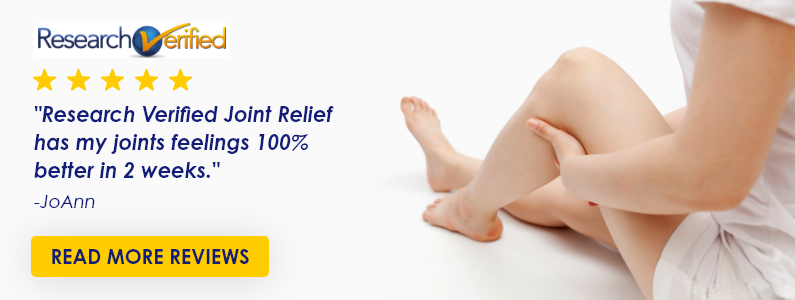From your youth to your old age, you should ensure that you do your best to look after your joints. Unhealthy joints can contribute to the development of painful health conditions such as arthritis. To avoid this condition and the symptoms associated with unhealthy joints, such as swelling and immense pain, you should implement steps to keep your joints healthy. From increasing your movement to relieving symptoms with cold or heat therapy, we discuss the seven best things that you can do to keep your joints healthy. Make beneficial changes to your lifestyle and avoid common myths regarding joint health that may be harming your overall wellbeing.
1. Increase Your Movement
Symptoms of unhealthy joints, such as prolonged pain, can impact an individual’s ability to stay active. For many, arthritis and other joint-related health conditions cause them to spend more time resting than moving. The hope is that resting can ease tension and reduce pain. But, authoritative sources claim that exercising and movement are important ways to alleviate joint pain and stiffness (1). This is likely because movement increases blood flow and improves circulation, helping blood cells navigate the body to the joints. These cells are then able to react quickly to joint pain and swelling, targeting the affected area and alleviating the uncomfortable symptoms. Movement’s ability to trigger the healing process is an essential part of keeping the joints healthy, so you should be sure to motivate yourself to move frequently to reduce symptoms of unhealthy joints.
2. Maintain a Healthy BMI
Your weight can have a significant impact on the health of your joints. Studies have found that weight loss can reduce pain, improve functioning, and alleviate stiffness in subjects that suffer from knee osteoarthritis (2). This is likely due to the fact that being overweight puts tremendous pressure on the joints, specifically weight-bearing joints in the legs. Body mass index (BMI) is an important tool to determine your ideal weight and confirm whether or not you are living at a healthy weight that does not harmfully impact your joints. Instead of considering how you look, BMI takes into account your height to confirm your body fat count. Therefore, a BMI measurement is more accurate than merely judging obesity through a visual lens. Confirming your BMI will provide clarity regarding the ideal weight for your height, helping you determine whether or not you should prioritize weight loss to improve the health of your joints and overall wellbeing.
3. Support Your Joints With Supplements
Research Verified® Joint Relief is formulated to provide optimal concentrations of important vitamins, minerals, and nutrients for healthy joints. Ingredients such as Methylsulfonylmethane (MSM) and Hyaluronic Acid are clinically proven for their ability to decrease inflammation, reduce pain, and cushion the joints. In addition, Research Verified® Joint Relief is all-natural, does not contain any harmful additives or preservatives and contains cGMP certification as well as third-party testing. Even better, there is a 365-day money-back guarantee on opened and unopened bottles! What more could you want to give your joints the relief they deserve?!

4. Strengthen Your Muscles
Besides increasing your movement through exercise like walking or light jogging, you should support the health of your joints by strengthening your muscles. Muscles help protect the joints from extensive environmental stressors. You can follow a muscle workout regime to start strengthening your muscles, just be sure to practice weight-lifting lightly (3). You do not want to overexert yourself, potentially tearing a muscle or damaging the joints. Ideally, you want to start very light and build your strength up over time.
5. Consume Anti-Inflammatory Foods
Anti-inflammatory foods can greatly support the joints and reduce the prominence of symptoms associated with unhealthy joints. This is because pain-related symptoms are commonly associated with swelling of the joints. Anti-inflammatory foods are capable of reducing this swelling, alleviating pressure on the joints, and subsequently reducing the pain that you may experience from unhealthy joints. Below, we list some of the best anti-inflammatory foods that you should add to your diet to improve the health of your joints.
- Olive oil
- Tomatoes
- Fatty fish, like salmon and tuna
- Leafy green vegetables, like spinach and kale
- Fruits high in important nutrients, like strawberries, blueberries, and oranges
- Nuts, such as almonds and walnuts
6. Improve Your Posture

Your posture plays more of a substantial role in the health of your joints than you may have originally realized. Poor posture, according to authoritative sources, has a significant impact on your joints as it forces individuals to overexert muscles in their necks and backs to compensate for the unnatural position of their bodies (4). The immune system, as a result, targets these muscles with the hopes of healing them and reducing pain. This causes inflammation in these areas. Prolonged suffering from inflammation is the main characteristic of chronic joint pain and the development of harmful joint conditions such as arthritis. The joints in the neck and back are especially vulnerable to pain, inflammation, and other symptoms of unhealthy joints as a result of poor posture.
7. Ice Your Joints or Apply Heat
Cold therapy and heat therapy are some of the most effective and inexpensive natural pain relievers as low and hot temperatures target inflammation in the joints and reduce swelling in the area. Many debate whether or not one should use cold therapy or heat therapy for the joints, however, medical professionals believe both to be particularly beneficial for those that suffer from joint-related conditions. According to Anne Rex, DO, “Ice wins to shut down swelling, inflammation and pain early on where heat may actually make an injury worse,” (5). That said, she reaffirms that this is in response to immediate acute injuries nearby the joints. She goes on to suggest that heat may be beneficial for long-term joint pain and inflammation. Medical counterpart Linda Mileti, MD confirms this theory as she states that “Patients with more chronic osteoarthritis usually feel better with heat”. A hot bath or warming gel, therefore, can be extremely beneficial for individuals suffering from arthritis. Therefore, the combination of cold and heat therapy depending on the nature of your joint issue and how long ago you noticed swelling or experienced pain can help you keep your joints healthy.
In conclusion
Looking after your joints is important as they play a pivotal role in your ability to move with comfort and live a wholesome life. We have discussed some of the best things that you can do to keep your joints healthy, helping you look after your joints and prevent age-related issues or poor treatment plans for contributing to inflammation and pain. By increasing your movement, maintaining a healthy BMI, supporting your joint health with high-quality supplements, strengthening your muscles with light weight-lifting and exercise, consuming foods with anti-inflammatory properties, improving your posture, and icing your joints after injury or applying heat during long-term periods of joint pain, you can keep your joints healthy for longer.




